Lifestyle
25 Tips to Become a More Sophisticated Wine Drinker
Part One
October 19, 2023

There is so much to learn when it comes to wine that it's almost hard to know where to begin. Even seasoned sommeliers will tell you that they don’t, and won’t ever, know it all. With that being said, there are some tried and true know-hows when it comes to elevating your wine game. These 25 tips will have you covered when it comes to wine etiquette, wine service and wine enjoyment. Cheers!

1. Storing Your Wine Bottles: Location, Temperature, Humidity, Position, and More
Light and temperature fluctuations are some of the most effective ways to destroy your wine.
To prevent these tricky variables from affecting your bottles, keep them stored in a dark place where temperature doesn’t vary too drastically throughout the seasons.Humidity is also required to maintain the freshness of your wine—or more specifically, the cork. Position the bottles on their sides so that the wine remains in contact with the cork, and the cork won’t dry out. Ideal storage temperature is 55°F with 70-75% humidity. If you have a basement, it’s about as close as you can get to the ideal storage temperature without installing new equipment.
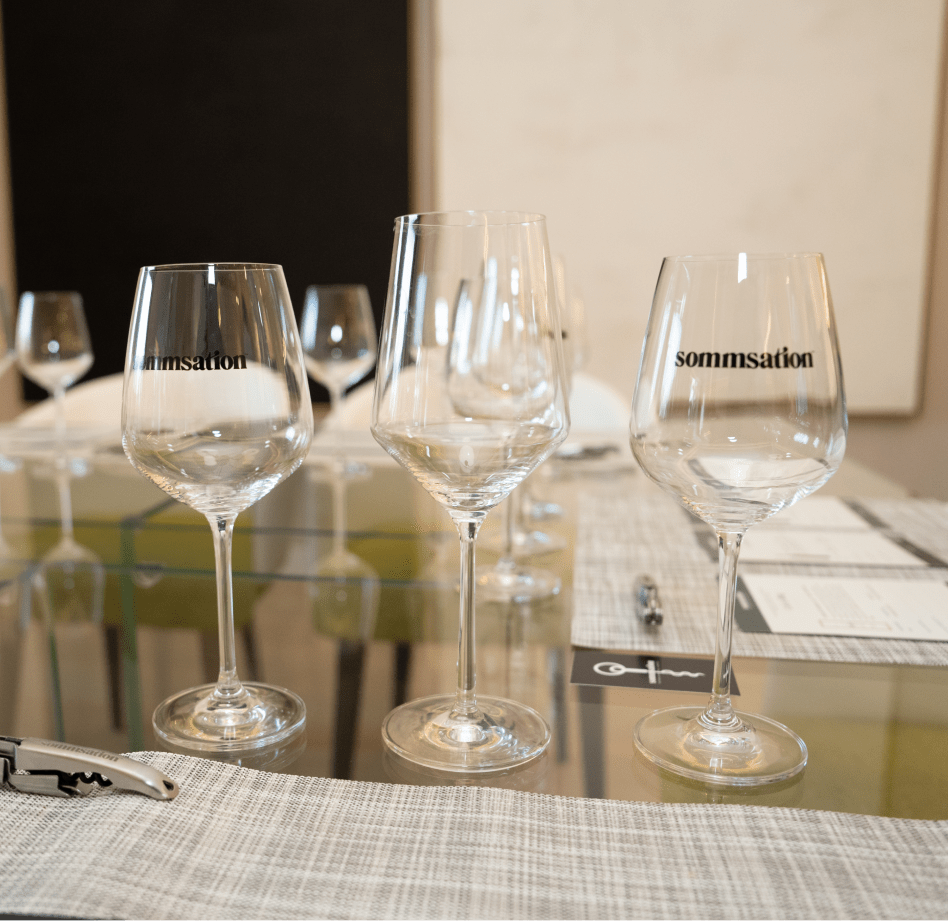
2. Types of Glassware, Including Storage and Cleaning Tips
There are many different brands and styles of glassware, and they all do a fantastic job of effortlessly getting the wine to your lips. Riedel is one of the leaders in the wine glassware industry for accentuating the nuances of different grapes, with each line shaped for a specific grape. These glasses are many and varied, but the basic concept remains the same.
White wines are typically served in smaller glassware, while red wines are served in larger ones. To enhance the aromatics of delicate red wines (such as Pinot Noir), go for a more bulbous glass. After washing (confirm if they're dishwasher safe or need to be hand washed) make sure your wine glasses aren't warm to the touch before storing them. If you store them in a cabinet, place them face up so they don’t trap any scents from the cabinet. If you don’t store them in a cabinet, store them face down so they don’t collect dust in the bowl.
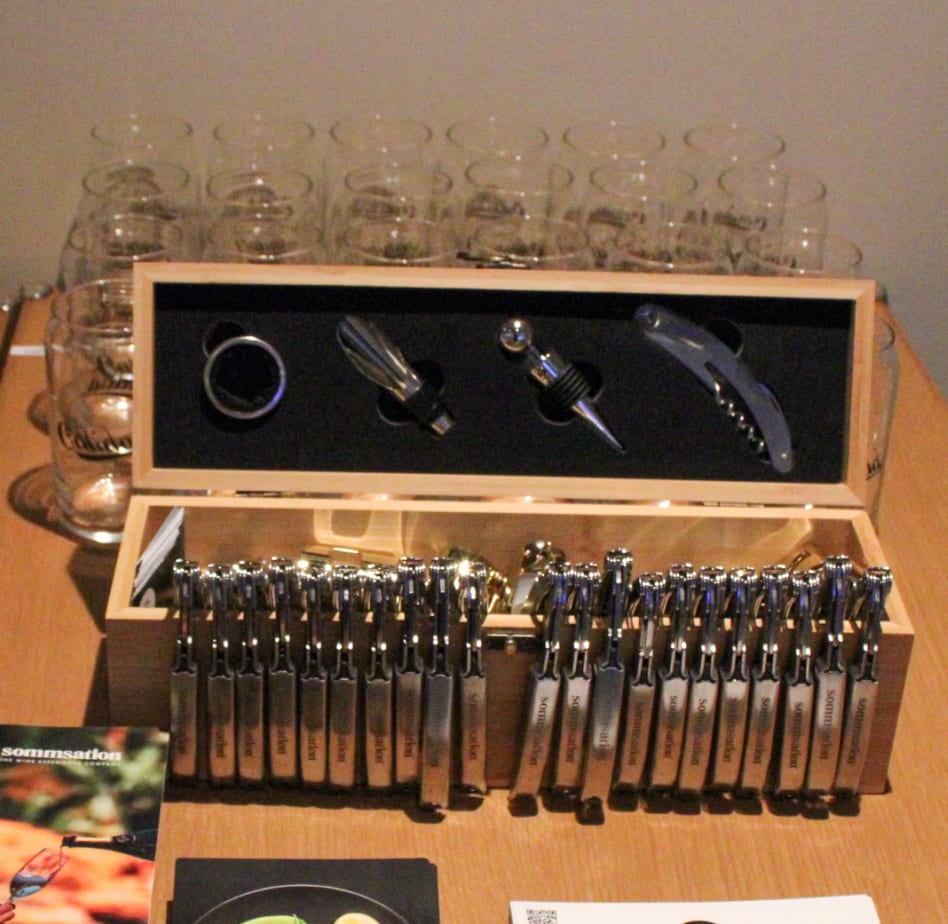
3. Different Types of Wine Openers and When to Use Them
With so many gadgets on the market for removing that pesky (but useful) seal and releasing the elixir within, it can be hard to know what kind of opener to use. A wine key, also known as a waiter’s corkscrew, is the most common wine opener, and with good reason. These openers come with single or double hinges, but either work well for opening youthful wines. The wine openers also commonly found in households are winged openers. These come with two levers on the outside, one on either side of the screw.
For older bottles, or softer corks, try to use an Ah-So or Butler opener. These two-pronged cork pullers will grip onto the sides of the cork, rather than down the center, making it less likely the cork will crumble. Electric wine openers have also made an entry into the market, and they’re fast and hassle-free. For most wines, we recommend using a double-hinge corkscrew to make opening a breeze with the extra leverage.
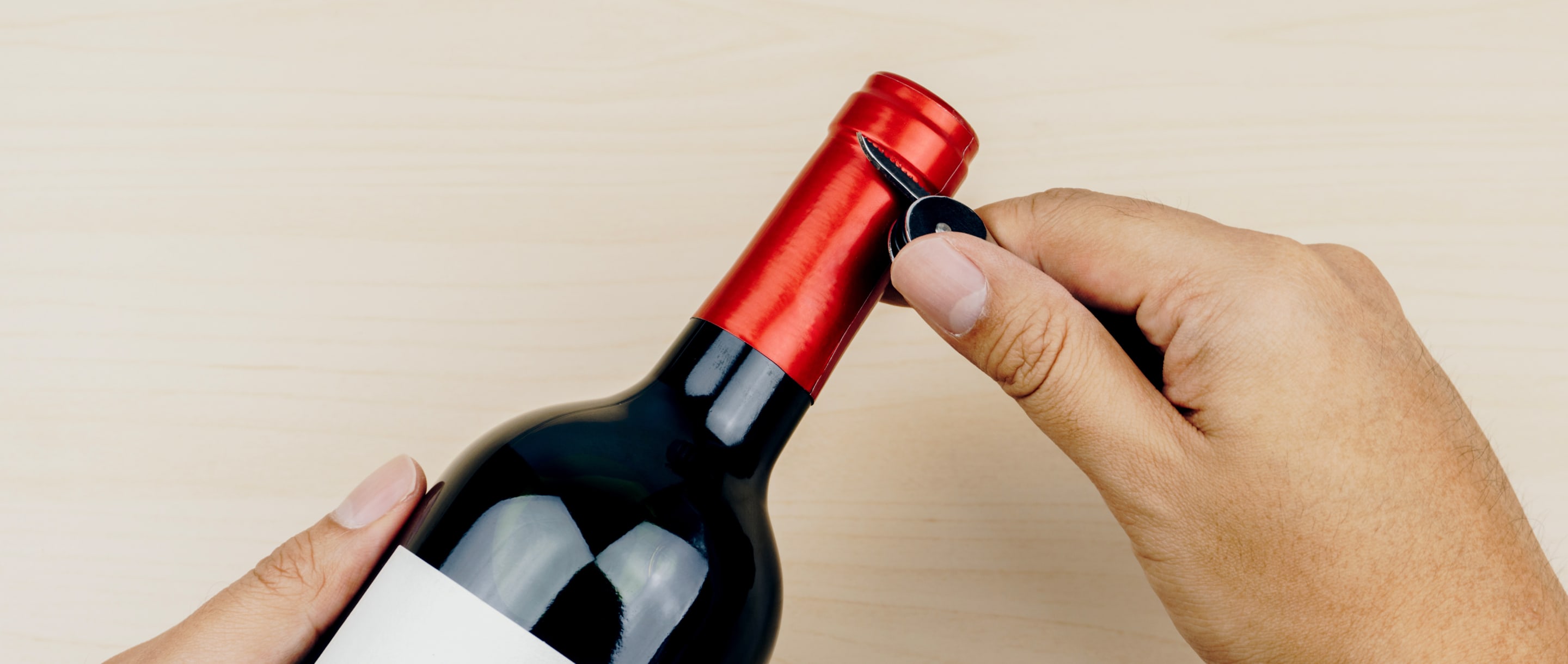
4. Opening Wine: Cutting foil, Holding the Bottle, and What to do with a Broken Corks
When you remove the foil, make sure to cut under the second lip of the bottle. If you cut and remove the foil from the top lip of the bottle, you could get bacteria or mold into your wine as you pour. Cellars can be dusty or moldy and it’s common for those particles to get under the foil.
If your wine bottle has a wax cap to it, don’t fret, there are a few different ways to tackle this extra barrier to your wine. Wax capsules will either be flexible and easy to bend or dry and crumbly. Either way, your corkscrew can go through them and into the cork. You can open the bottle as if there was no wax at all. This might get slightly messy so make sure to take care to remove the crumbling pieces to prevent them from spilling into the bottle. Another way is to use a warm washcloth, dunked into hot water. Let the cloth get nice and hot before placing it on the very top of the bottle. Don't let the cloth drop down the sides and affect the temperature of the wine, but only remain on the seal of wax. The top will become softer and more pliable and you should be able to cut through it like you would a foil.
When opening wine, most professionals will hold the bottle from the bottom. However, making sure you have a comfortable, steady grip, either on the middle or neck of the bottle, is most important. Without the proper leverage, a cork can snap in half. Even the most seasoned professionals can have this happen, so don’t panic. If you break a cork, you can try to carefully remove the other half using a single or double-hinged corkscrew. The easiest method is to push the remaining cork into the bottle and simply strain the wine into a decanter using a filter (metal fine strainer, coffee filter, cheese cloth) to remove any small pieces from your wine.
5. Opening Sparkling Wine: Best Practices for Caps, Corks and Cages
The amount of pressure contained in your bottle of bubbly is anywhere from 60-90 psi. For reference, car tires are about 30-35 psi. To get the pressure as low as you can, make sure the wine is cold (read more about ideal temperatures and chilling wines). Similarly to how your car tires need to be inflated with air as the weather gets cooler, pressure inside a bottle will contract under lower temperatures. The colder the bottle, the less likely the cork is to pop off unexpectedly and the wine is less likely to spill or bubble out when the cork is removed.
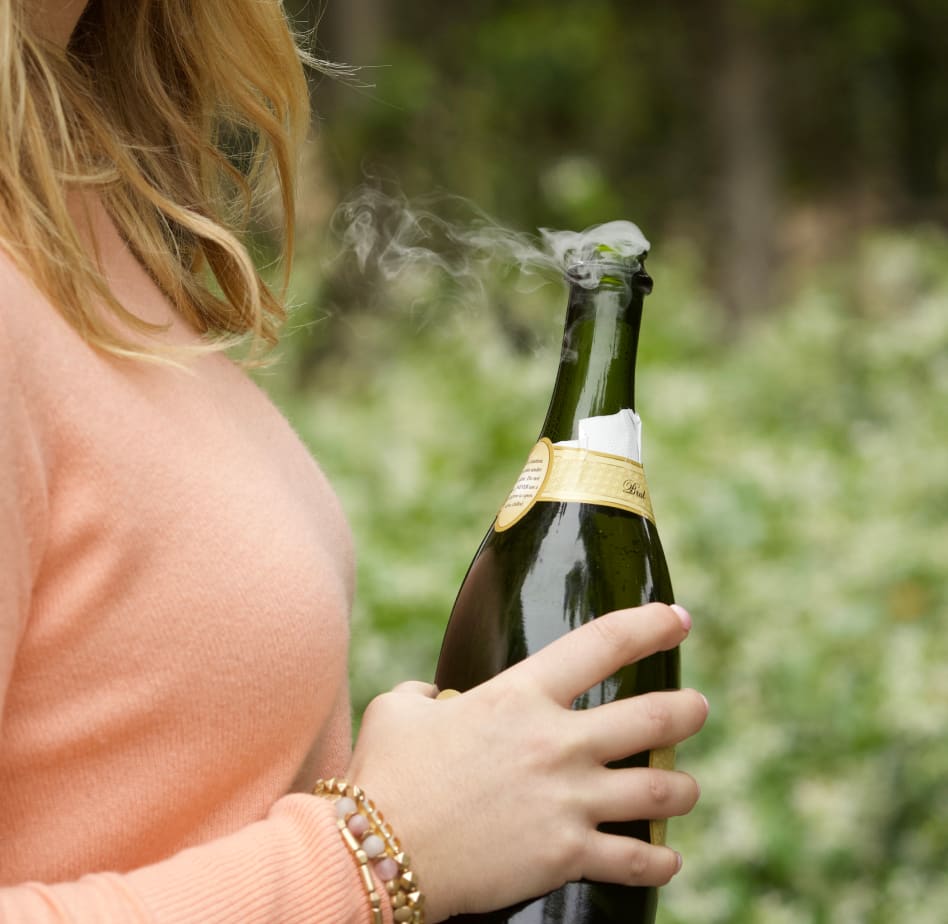
Once your bottle is properly chilled, open the cage which is always 5 ½ turns. Position one hand, or your thumb, on top of the cage as soon as it's released to prevent the cork from popping unexpectedly. A hand towel or kitchen towel is an added safety precaution, but optional. Leave the cage on top of the cork for added traction, and place your other hand on the bottom of the bottle. Holding the cork and cage steady in one hand, turn the bottle instead of twisting the cork. You’ll feel pressure building behind the cork, so make sure to match that pressure with your grip as you continue to turn the bottle slowly. This will allow the wine to open with a slight hiss instead of a large pop. While popping the cork is fun, it’s a festive faux pas. If a loud pop occurs when opening the bottle, you are releasing an excess of carbon dioxide, which may make it go flat faster.

6. Smelling the Cork
If you’re smelling the cork, chances are you’re looking for Trichloroanisole, or TCA. This chemical compound is responsible for the term “corked wine” or as some call it, “cork taint” which smells of musty earth, wet basement, or molded cardboard. It’s likely introduced to the wine through the cork, and introduced to the cork during the harvesting and cleaning process. TCA isn’t always detectable on the cork, so we recommend always smelling the cork and the wine to confirm its presence. Note that TCA is not harmful to your health but it is harmful to the health of the wine. If TCA is present, it’s likely that your wine has spoiled.
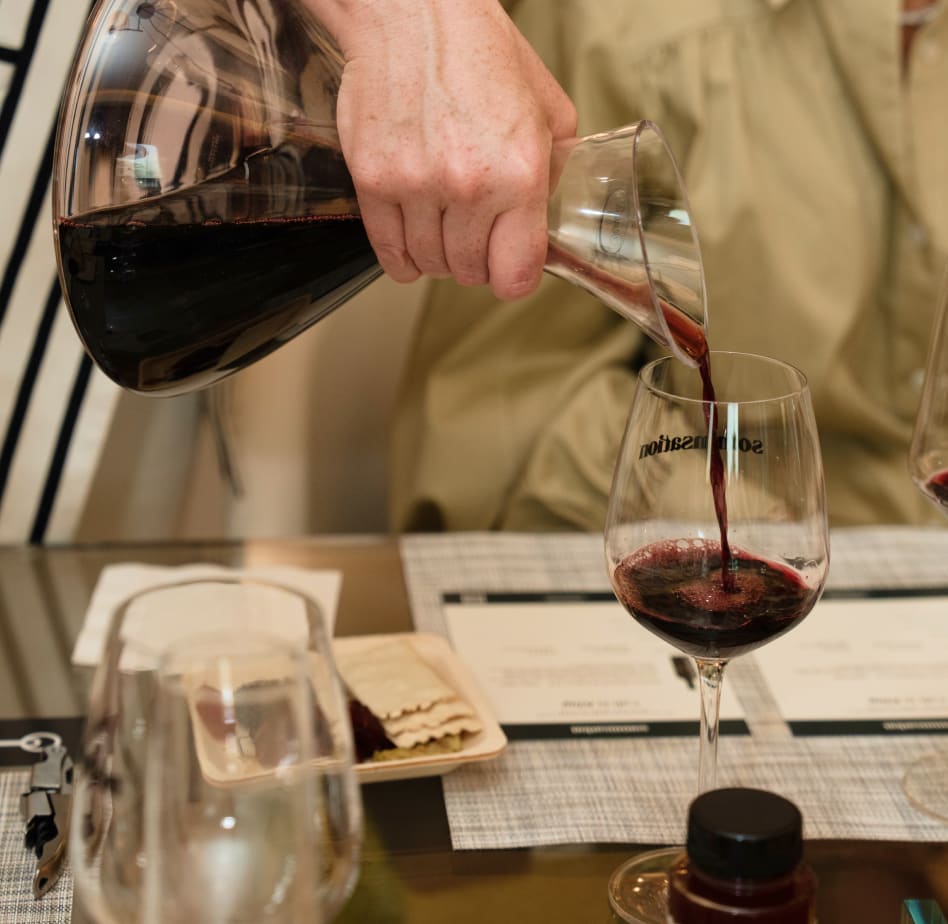
7. Decanting and Aerating Younger and Older Wines
The definition for “decant” when it comes to wine is “to separate.” There are two different reasons to decant wine. When decanting a younger wine (any wine within 5 years of the vintage printed on the labels), you’re separating the wine from its original vessel in order to expose it to oxygen. When decanting an older wine (any wine that is 15+ years from the vintage printed on the label), you’re separating the wine from the sediment that has formed over time in its original vessel.
The purpose of decanting younger wines is to aerate them–hence the invention of aerators and the ability to use the terms decant and aerate interchangeably. Young wines benefit most from exposure to oxygen because they tend to be tight and tense (less aromatically appealing) when first opened. This is where the phrase “letting the wine breathe'' came to be.
Exposing the young wines to oxygen allows the aromatics and flavors to fully develop and open up. Some of the more volatile aromas that would have dissipated on their own with time in the bottle also need to blow off. Pour the wine vigorously into the decanter to incorporate more air into the wine.
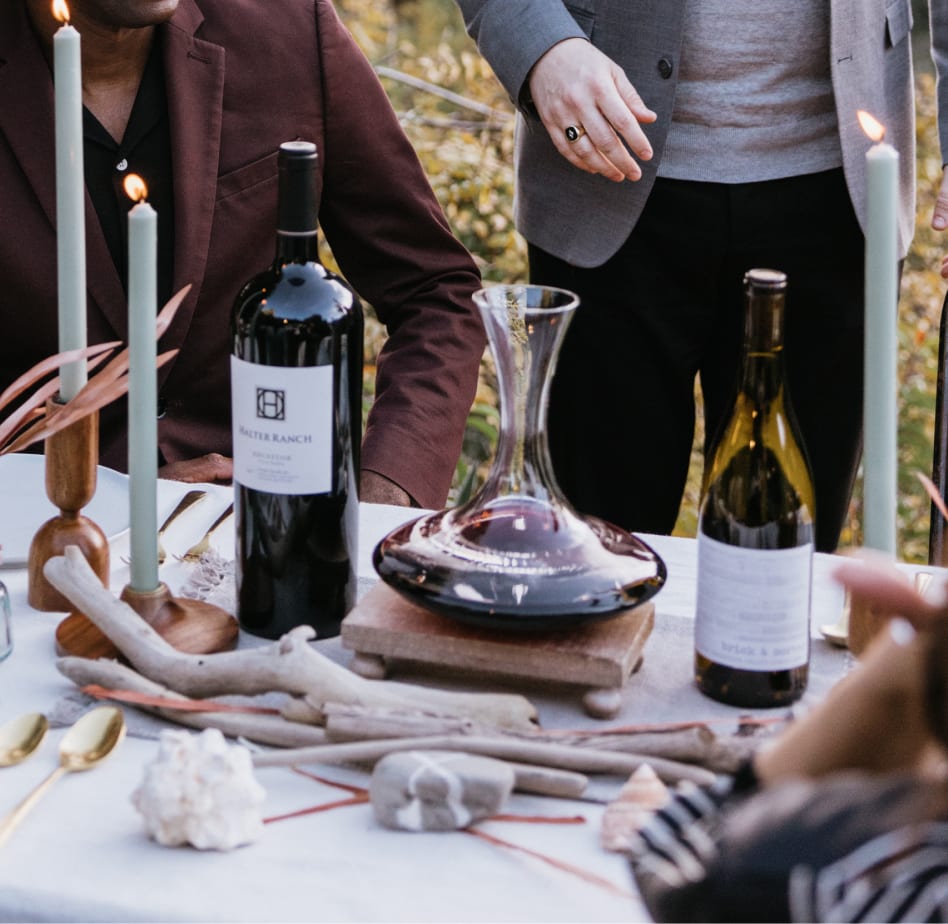
8. Decanting and Aerating: Buying and Cleaning Your Decanter
There are many different sizes and shapes of decanters available on the market today. Larger, bulbous decanters can be used to help open young wines faster. The extra surface area is helpful for the volatile aromas to blow off. Older wines should be decanted using a smaller size decanter, to prevent the wine from opening too quickly in its older state.
There are plenty of highly decorative decanters in the market today as well. These are just as effective, and can make for a nice center piece on your table.
Aerators also come in different shapes and sizes. Some have a dual chamber or a large bulbous area the wine will pour through. These aerators are essentially doing the same thing as a decanter, and they strain the wine at the same time.
Porróns are another type of glass that you might see in a wine event. Shaped like an elaborate watering can, with one end being a very thin pour spout, these are traditionally meant so everyone can drink out of the same glass without putting their mouth on it. These clever devices came from Catalunya, Spain.
Decanters can stain easily with overexposure to red wine. The best way to clean them is with hot water and espresso cleaner. Add hot water to your decanter and place a teaspoon of espresso cleaner inside. Swirl your decanter and let sit overnight, or for at least an hour. This cleaner works wonders at removing the stains of red wine, as it was originally intended to remove coffee stains. Once clean, rinse out your decanter with room temperature water and store upside down until dry. There are a lot of gadgets you can find online for cleaning decanters, including what look like long skinny Q-tips, and magnetized cloths so you can dry the inside of your decanter with ease.
For recommendations on decanters and aerators, our Lead Sommelier, Elyse Lovenworth was featured in NY Mag’s “The 9 Very Best Wine Decanters and Aerators“.
Now that we've covered the basics of storing and opening different types of wine, you're ready for the fun part—tasting! Stay tuned for Part 2 of '25 Tips for Being a Sophisticated Wine Drinker'.


